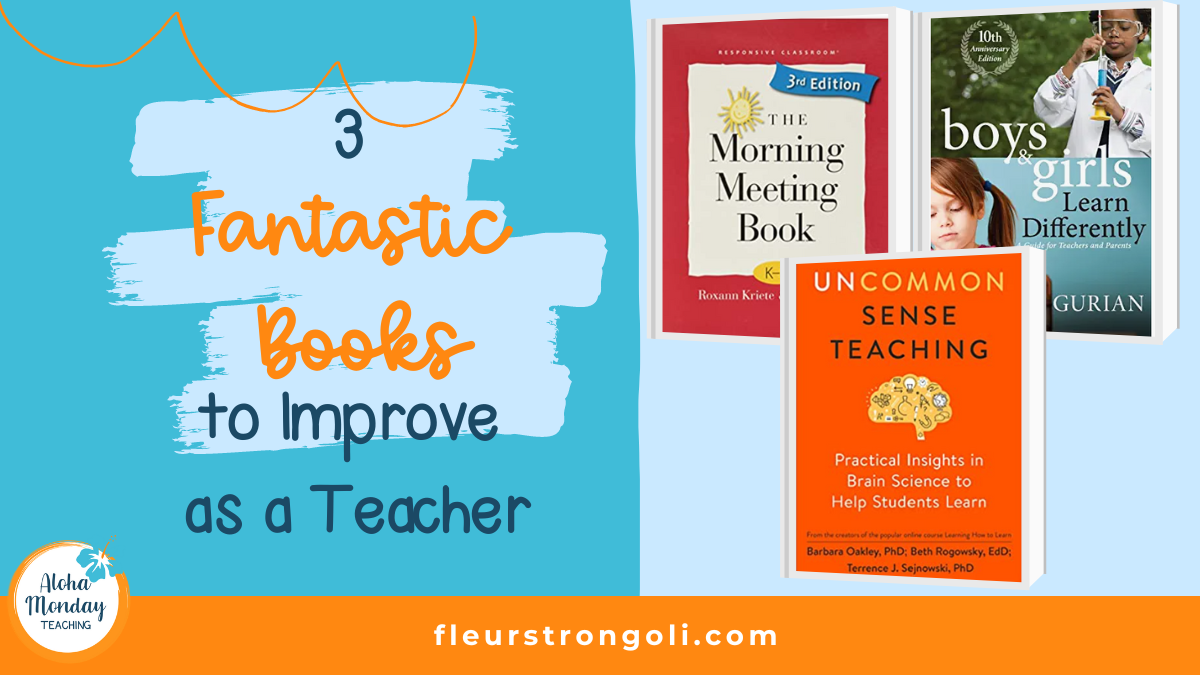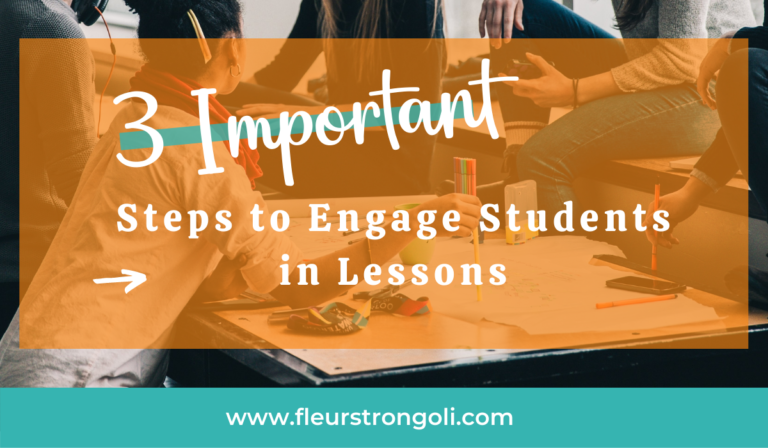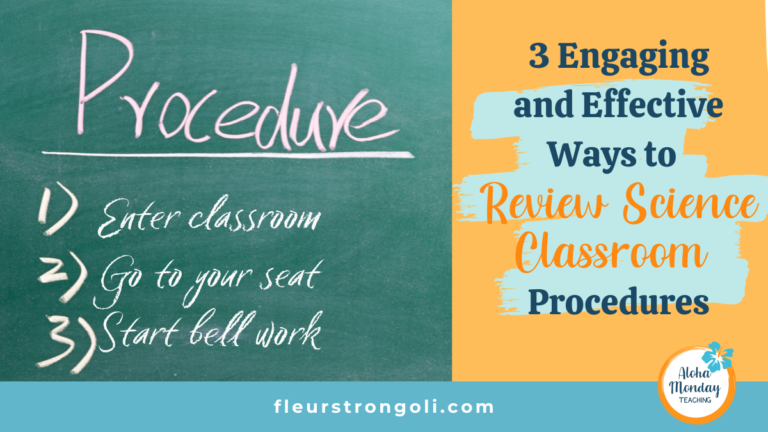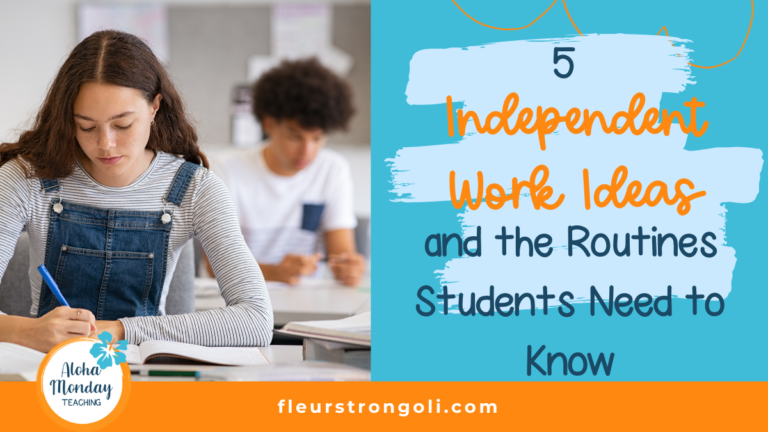3 Fantastic Books to Improve as a Teacher
If you’re anything like me, you’re always working on ways to improve as a teacher. I LOVE being a Science teacher, and I want to make sure I’m doing my best for my students. I’ve read many books and attended various professional development trainings throughout the years.
In This Post
I will share three books that I have read and continue to use in my classroom. These books have helped me become a better teacher by applying the strategies I have learned. These books have also shown me WHY I need these strategies in my classroom. I will share what I’ve learned and how it has helped me in my classroom over the years.
While you are improving yourself as a teacher, be sure to get your free guide 7 Daily Must-Do Routines to Run Your Science Classroom Like a Pro today!
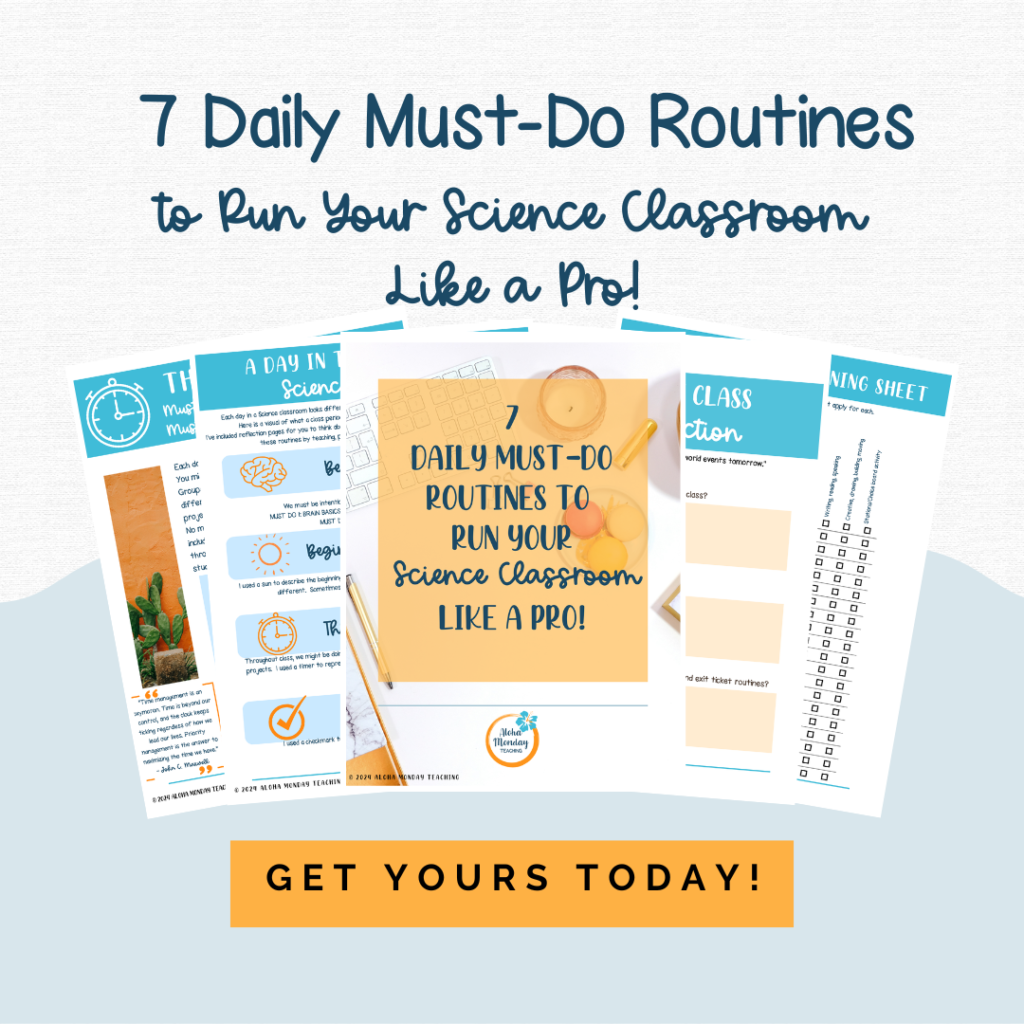
Disclosure: This post contains some affiliate links for your convenience. As an Amazon Associate I earn from qualifying purchases with no cost to you. You can get many books on Audible to listen to while you are driving, working out, or relaxing. Click this link for a free trial and get a free audiobook!
Books that have Helped me Improve as a Teacher
These are my top 3 books that have helped me in my classroom. I am very interested in how the brain learns, so I can teach my students better. Boys and Girls Learn Differently and Uncommon Sense Teaching both give loads of information and strategies from neuroscience. When building a classroom community, which is imperative in classroom management, any book from Responsive Teaching is worth a read. I will discuss The Morning Meeting Book because this is something that has transformed our community in my classroom over the years.
Help Students Learn
I had the most fantastic opportunity and attended a whole day seminar by the Gurian Institute. It was all about neuroscience and how the brains of males and females differ. They showed us brain scans of male and female brains at rest and involved in cognitive activity. It was so interesting to see the different parts of the brain at work and the fact that they were different between males and females!
So I read Dr. Michael Gurian’s book Boys and Girls Learn Differently to learn even more. The first two chapters are about how the brain learns and how girls and boys learn differently. It shows us advantages and challenges for the male and female brain in schools. Schools tend to teach more to the female brain rather than the male brain.
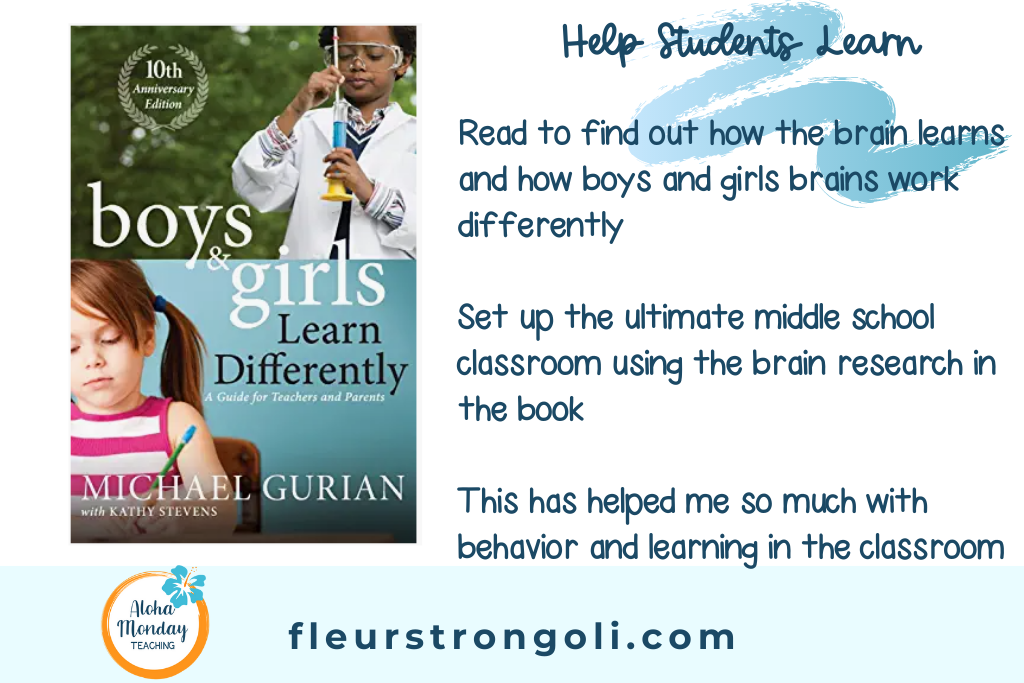
Then the rest of the book shows how to build the ultimate classroom in elementary, middle, and high school. So I skipped over to middle school to read about that. They give strategies and the research based reasons behind them. Some of my favorites include seating arrangements. I normally like to have 2 boys and 2 girls in a group, but I have also tried all boy and all girl groups. The book mentions this. It works pretty well, especially when they know I can move them at any given moment. But, they tend to work better with those of the same gender.
The chapter also talks about bonding and attachment. It says, “Middle schoolers of all kinds want attachment to the teacher. Some show it by anger, others by sadness, or silene, or attention-getting devices.” Dr. Gurian gives many ways and reasons on building a bond with students so there is trust. It will help guide students through their emotional rollercoasters of puberty and their limbic system being stressed out.
At the end of the book is a study guide. This would be great in a book study by a group of like-minded teachers. There is even a section for a parent’s book study.
This book and the seminar has helped me with behavior in my classroom and my methods of teaching. I’m aware of my boys and girls’ brains and how their learning and behaviors are different.
Bonus book– Strategies for Teaching Boys and Girls-Secondary Level. This is the book that gives specific ideas and strategies for each subject area. It is helpful when lesson planning!
Ways to Improve Teaching Methods
A fun and easy read to learn ways to improve teaching methods is Uncommon Sense Teaching by Drs. Barbara Oakley, Beth Rogowsky, and Terrence J. Sejnowski. This book goes deep into how the brain learns while giving easy to understand analogies. It’s probably one of my favorite books of all time!
During and at the end of each chapter there are practice activities for you to use in your classroom. There are many tips and strategies to use to help your students learn, grow neural links, and move information into long term memory.
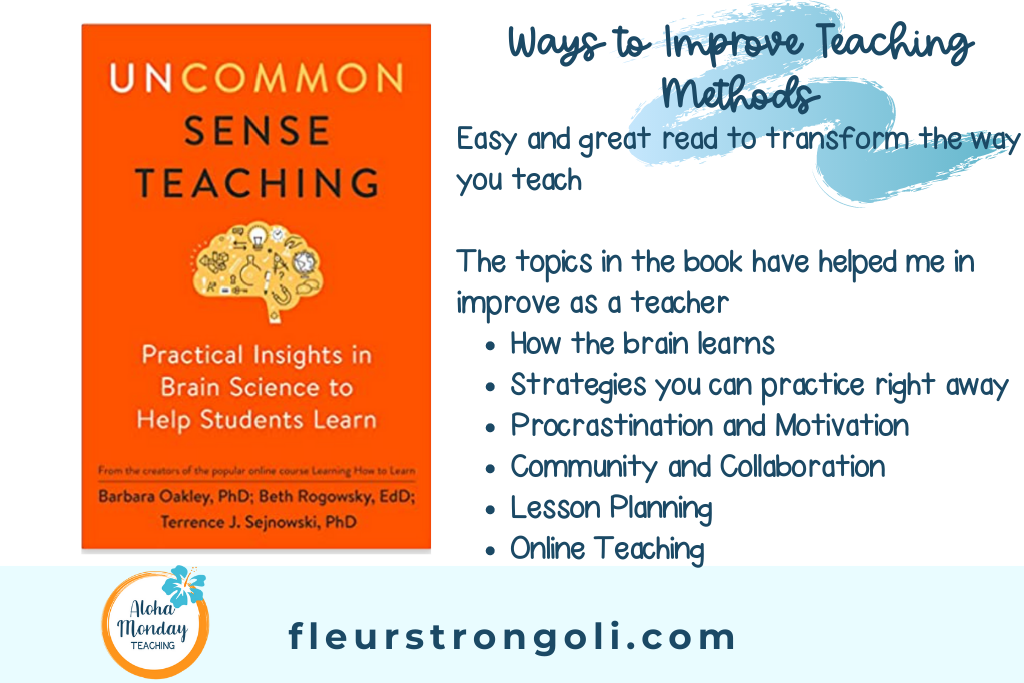
The very first chapter is about building memory, and the strategies shared are what I do in my classroom almost daily. You probably already do this too, but now you’ll know why to do it more often. Students recall what they learned which will link neurons to strengthen them, eventually creating those neural links in long term memory (with more practice). In my classroom, the students either write down a quick summary of what they learned and/or talk with a partner. This is something I encourage them to do at home too, which is helping them learn to study (that’s a whole other topic!).
They share working memory and how much students of different ages can hold in their working memory. It differs for our students with special needs. I love the analogy they give to explain what happens in the brain. The analogy is a conductor (working memory), Hip (hippocampus), and Neo (neocortex). Hip sings what working memory is sending it, and Neo sings it back. This is to form connections between neurons. Eventually Neo can sing without Hip, because it has been placed in long term memory.
I could share everything in this book, but I want you to read it yourself. The book covers so much more including procrastination and motivation, classroom community and collaboration, lesson planning, and online teaching. It’s a must read to transform the way you teach and help your students learn.
How to Build a Community in the Classroom
The book that has helped me build community in my classroom is The Morning Meeting Book from the Responsive Classroom. I started reading and applying this when I taught elementary school. I was able to build a positive and safe classroom community through our morning meetings.
There are four parts to the morning meeting, and they say each has to be done and in order. The four parts are Greeting, Sharing, Activity, and Morning Message.
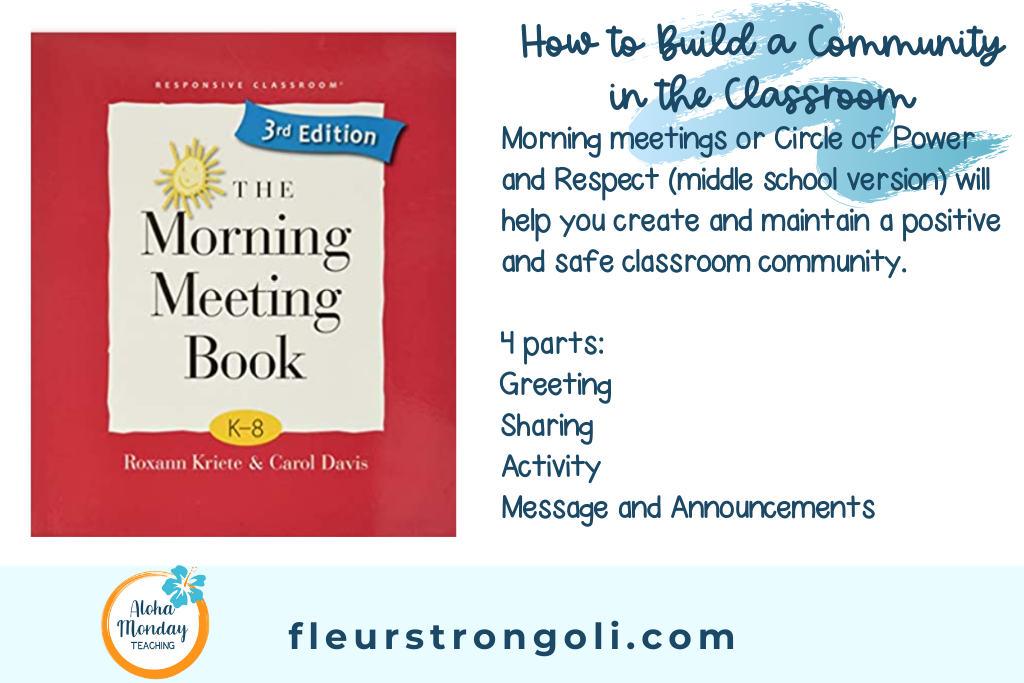
When I moved to middle school, I had to figure out how to incorporate this into my schedule. There is a chapter just for middle schoolers, which is very helpful. Rather than calling it a morning meeting, they call it the “Circle of Power and Respect.” They suggest holding a circle of power and respect during an Advisory period, and to hold a meeting at least 3 times a week. That isn’t feasible for most of us, so I tried different things.
I have tried it with my Advisory class, which only meets once a week. I didn’t think this was very effective, since it was only once a week and it was with a group of students who may not be together in the same classes anyway.
Another way I’ve tried it was with my normal Science classes, with modifications. I have done it once a week (on our shorter class period day), and have tried it 2-3 times a week at the very beginning of class. I like either way, and the kids love it.
Wrap Up
I LOVE the three books I shared in this post. They have transformed the way I teach and build community in my classroom. Boys and Girls Learn Differently and Uncommon Sense Teaching will help you understand the brain and how it learns. You will get strategies to use in your classroom so your students learn better. The Morning Meeting Book from Responsive Classroom addresses the need for establishing and maintaining a positive and safe classroom community.
Links and Books Mentioned
Boys and Girls Learn Differently
Strategies for Teaching Boys and Girls-Secondary Level
3 Important Steps to Engage Students in Lessons
Your Turn
What books have helped you improve as a teacher? If you haven’t read the books I shared, I challenge you to read at least one of them and apply the strategies to transform your teaching and classroom! Be sure to reply in the comments!


